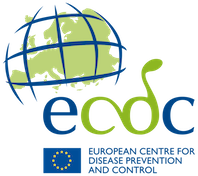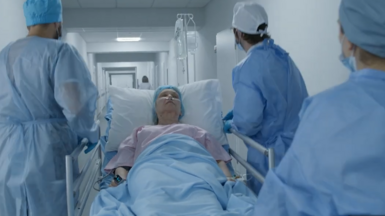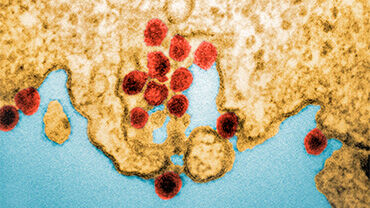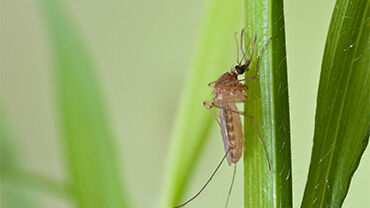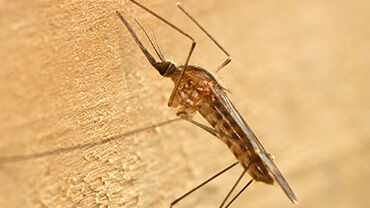World Mosquito Day 2025: Europe sets new records for mosquito-borne diseases
ECDC has warned that record breaking outbreaks of West Nile virus (WNV) infection and chikungunya virus disease point to a ‘new normal’ in Europe prompting the need for a robust and coordinated response to protect public health across Europe.
Europe is experiencing longer and more intense transmission seasons for mosquito-borne diseases, including WNV infection and chikungunya virus disease. This shift is driven by climatic and environmental factors such as rising temperatures, longer summer seasons, milder winters and changes in rainfall patterns — conditions that combine to create a favourable environment for mosquitoes to thrive and transmit viruses. Pamela Rendi-Wagner, ECDC Director, said:
'Europe is entering a new phase — where longer, more widespread and more intense transmission of mosquito-borne diseases is becoming the new normal. ECDC is working closely with all Member States to provide tailored support and timely public health guidance to strengthen Europe’s response'.
The mosquito that can spread chikungunya virus (Aedes albopictus) is now established in 16 European countries and 369 regions, up from just 114 regions a decade ago. Combined with increasing levels of international travel, this spread makes local outbreaks more likely. Europe has seen 27 chikungunya outbreaks so far in 2025, a new record for the continent. For the first time, a locally acquired chikungunya virus disease case has been reported in France’s Alsace region — an exceptional occurrence at this latitude, highlighting the continued northward expansion of the transmission risk.
The distribution of West Nile virus cases in Europe continues to shift and over the past decade, the infection has been detected in new areas every year. This year, for the first time, infections have been reported in the Italian provinces of Latina and Frosinone, and Sălaj County in Romania. Europe has recorded the highest number of West Nile virus cases in three years. ECDC expects infections to continue rising, likely reaching a seasonal peak in August or September.
New ECDC guidance outlines practical surveillance, prevention, and control measures for chikungunya virus disease, dengue, and Zika virus disease, with tailored recommendations for European countries, including those with limited experience or that have not previously faced the threat of these mosquito-borne diseases. Designed for public health authorities, the guidance provides a ready-to-use practical toolkit to assess risk levels and deploy preparedness and control measures suited to their specific situation. An ECDC guidance for West Nile virus is also available. Dr Céline Gossner, Head of Section Food-, Water-, Vector-borne and Zoonotic Diseases at ECDC, said:
'As the mosquito-borne disease landscape evolves, more people in Europe will be at risk in the future. This makes prevention more important than ever, both through coordinated public health action and personal protection measures. There is an urgent need to strengthen and scale up efficient, environmentally friendly mosquito control interventions'.
ECDC encourages individuals living in affected areas and visitors, especially the elderly, children, and people with weakened immune systems, to protect themselves against mosquito bites, using mosquito repellent, wearing long sleeves and trousers especially at dawn and dusk, using window screens, bed nets and air conditioning/fans. Healthcare professionals should be aware of the circulation of these viruses and ensure early diagnosis. New vaccines have been developed for chikungunya virus disease, but there is no vaccine for human use against WNV infection.
Notes to the editor
- ECDC issues weekly and seasonal surveillance reports for chikungunya virus disease and West Nile virus across Europe to inform timely public-health responses. These reports provide an up-to-date overview of reported cases, affected areas, and include maps and trends that help visualise the evolving situation. Public health authorities can use this information to guide risk assessments, allocate resources, and activate vector control measures. Individuals can also use it to stay informed about local transmission and take appropriate personal protective measures, especially when living in or travelling to affected areas.
- As of 13 August 2025, eight European countries have reported 335 locally acquired human cases of WNV infection and 19 deaths. Italy remains the most affected country, with 274 confirmed infections, followed by Greece (35 cases), Serbia (nine cases), France (seven cases), Romania (six cases), Hungary (two cases), Bulgaria (one case), and Spain (one case).
- France has reported 111 cases of chikungunya virus disease and Italy seven. No deaths have been reported in mainland Europe, but globally, over 240 000 chikungunya virus disease cases and 90 deaths have been recorded so far in 2025.
Latest reports
Seasonal surveillance for chikungunya virus disease in the EU/EEA for 2025
Update providing weekly overview of the countries and areas where chikungunya virus disease cases have been reported.
Weekly updates: Seasonal surveillance in humans in 2025 for West Nile virus
Weekly updates with the latest reports on West Nile virus cases in Europe updated every Friday, during the transmission season.
Monthly updates: Seasonal surveillance in humans and animals in 2025 for West Nile virus
Monthly updates with the latest reports on West Nile virus cases in Europe.
Learn more about mosquito-borne diseases
Infographic
How imported dengue virus from travellers can spread in the EU
Infographic explaining how climate change and global travel have made mosquito-borne diseases such as dengue an increasing risk to people in Europe.
Video
Video: From abroad to your backyard - dengue in Europe
Dengue is no longer just a tropical disease - it's been showing up in Europe more and more often. Watch our short animation and find out how the importation of dengue happens.
News
New ECDC weekly reports and guidance to tackle mosquito-borne diseases across Europe
As Europe enters this year’s mosquito season, ECDC has launched a new series of weekly surveillance updates to help public health authorities monitor mosquito-borne diseases in a timely way, covering chikungunya, dengue, Zika, and West Nile viruses.
E-learning course
E-learning: Assess and Mitigate the Risk of Locally Acquired Aedes-Borne Viral Diseases in the EU/EEA
This course helps public health professionals and authorities assess the risk of locally acquired Aedes-borne viral diseases within the specific context of their EU/EEA country and identify measures to prevent local transmission.
Surveillance report
Surveillance, prevention and control of West Nile virus and Usutu virus infections in the EU/EEA
This technical report describes the result of a project to provide an overview of the epidemiological situation of WNV and USUV, the diagnostic, surveillance, prevention and control practices applied in EU/EEA countries, and to assess their public health and animal health impact in the EU/EEA.
